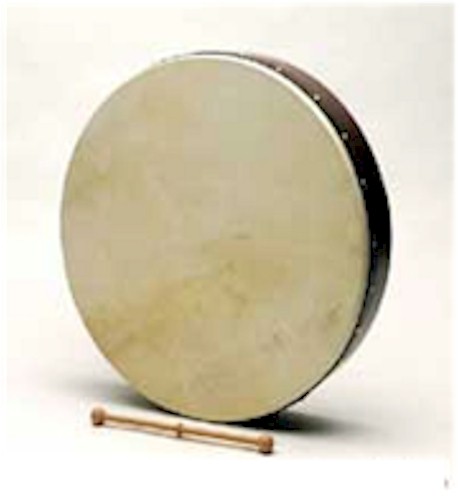
Throughout the ages, music has been used for many things. Such things are: entertainment, parties, gatherings, battles, ceremonies, rituals, and communication. Different cultures used music for various things. The Celts played instruments such as the bodhran, the feadan, the clarsach, and piob. The bodhran is a type of drum made from animal skin for the drum head and ash tree wood for the base. This is known as the oldest form of musical instruments in the world. The Celts used all of these instruments for entertainment, rituals, and gatherings. The Ancient Greeks used string instruments such as the Lyre. The Lyre or λύρα, has three or more strings and and soundbox. The Greeks used this mostly for entertainment. The Lyre has become a symbol of general music all over the world.
Another type of instrument the Greeks used was the Water Organ (ὕδωρ, hýdōr).
 The power of hydraulic pressure was used to make sound go through the pipes in the organ. The Greeks used the water organ for battles, ceremonies, and entertianment. The Ancient Egyptians used instruments such as hand-held drums, castanets(similar to Celtic bones excpet made with shells), rattles, and bells. Other instruments include flutes, trumpets, double and single reed woodwinds, and many string instruments such as the harp, lyre, and lutes(used with a bow). They used music for battles, ceremonies, and religion. These cultures are just a small example of ancient musical instruments.
The power of hydraulic pressure was used to make sound go through the pipes in the organ. The Greeks used the water organ for battles, ceremonies, and entertianment. The Ancient Egyptians used instruments such as hand-held drums, castanets(similar to Celtic bones excpet made with shells), rattles, and bells. Other instruments include flutes, trumpets, double and single reed woodwinds, and many string instruments such as the harp, lyre, and lutes(used with a bow). They used music for battles, ceremonies, and religion. These cultures are just a small example of ancient musical instruments. Besides using instruments, ancient cultures used music notation. The Seikilos epitaph is the oldest form of notation recorded. It was found on the side of a tombstone in Turkey. The tune includes ancient notation and lyrics. The notation transcribed into modern notation is in the key of D and is in 6/8 time signature.
 The symbols on the notation each mean a specific note name and the marks above the symbols represent the type of note(quarter, eight, etc). The lyrics attached are placed below the notes to know where and what to sing with the notes.
The symbols on the notation each mean a specific note name and the marks above the symbols represent the type of note(quarter, eight, etc). The lyrics attached are placed below the notes to know where and what to sing with the notes. The lyrics are as follows:
While you live, shine

Don't suffer anything at all;
Life exists only a short while
And time demands its toll.
Types of ancient music like this were taught in many places. For example, the music teacher, Terpander, is know as the founder of classical Greek music. He expanded the world of music in many ways. One of the things he did was increase the number of strings on the lyre from four to seven. Another thing he did was introduce new rhythms and new ways a using music.
Ancient music is a wonderful and interesting subject. There are so many things about the history of music I didn't know that I learned by doing this research assignment. The most interesting to me was the Seikilos epitaph. It is amazing how that old type of notation looks and how it is interpreted. I hope to expand my knowledge in the history of music by doing more reseach like this and doing some on my own.
